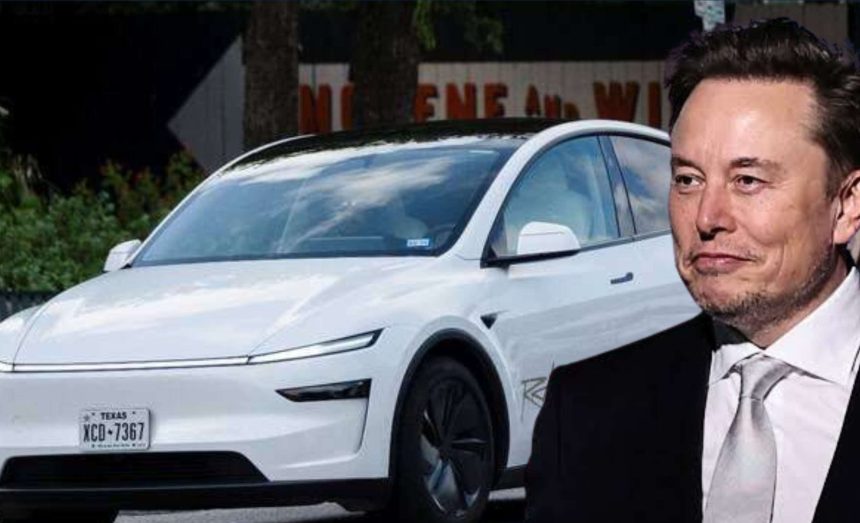Tesla has launched its self-driving robotaxis, marking the first time its vehicles have carried paying passengers without human drivers behind the wheel.
The trial launch, confirmed by CEO Elon Musk on his social media platform X, kicked off on Sunday, June 21, 2025, in Austin, Texas.
“Super congratulations to the @Tesla_AI software & chip design teams on a successful @Robotaxi launch!! Culmination of a decade of hard work. Both the AI chip and software teams were built from scratch within Tesla,” Musk said in the X post.
Understanding Robotaxis?
Robotaxis are driverless taxis that use autonomous vehicle technology to transport passengers without a human driver behind the wheel.
These vehicles operate using a combination of AI-powered software, real-time sensors, GPS mapping, and machine learning algorithms to navigate complex traffic environments independently.
What You Need to Know
Tesla invited a select group of social media influencers to experience the robotaxi trial. The test involves around 10 vehicles with no drivers, though safety monitors are stationed in the front seats.
These cars, equipped with advanced autonomous software, picked up a limited number of riders who paid a flat fare of $4.20. The milestone is being described by industry experts as a significant strategic shift for the electric vehicle industry.
Still a Long Road Ahead
While the robotaxi launch marks a historic moment for Tesla, experts caution that a broader rollout of autonomous taxis will be complex and slow-moving.
According to a Reuters post, Philip Koopman, a professor of computer engineering at Carnegie Mellon University described the event as “the end of the beginning—not the beginning of the end.”
“Scaling this in real-world environments, with unpredictable traffic, weather, and human behaviour, is a challenge that could take years—or even decades,” Koopman said.
Regulatory Landscape Takes Shape
Coinciding with Tesla’s robotaxi debut, Texas Governor Greg Abbott signed new legislation requiring companies to obtain a state permit to operate self-driving vehicles.
The law signals an effort to establish regulatory clarity around the deployment of autonomous technology, especially as major tech and auto firms increase their testing in the state.
Indeed, Tesla is not alone in the race. According to reports seen by Techparley, Alphabet’s Waymo and other competitors are also looking to develop autonomous ride-hailing services.
Stakes for the Electric Vehicle Industry
Tesla’s robotaxi launch represents more than a milestone for one company, it signals a critical turning points for the entire electric vehicle (EV) industry. Here are key stakes that define what’s at risk and what’s possible:
Validation of Autonomous Technology
A successful deployment of Tesla’s robotaxis could legitimise full self-driving capabilities, proving that EVs can safely and reliably operate without human intervention. This would set a new standard for the industry and compel rivals to accelerate their own autonomous programmes.
Acceleration of Regulatory Frameworks
Texas’ new legislation requiring permits for autonomous vehicles reflects the growing regulatory interest in driverless transport. A smooth trial may encourage other states and countries to fast-track laws that support the commercialisation of autonomous EVs.
Investor Pressure to Deliver Innovation
Tesla’s market value is now closely tied to its promise of autonomy and robotics. This shift may prompt other EV manufacturers to diversify their business models beyond car production, focusing more on AI, software, and mobility-as-a-service.
Read Also: “Not all ‘AI startups’ are AI startups,” experts debate as industry witness surge
Need for Urban Infrastructure Overhaul
Autonomous vehicles depend heavily on smart city infrastructure, high-speed connectivity, precise digital maps, and widespread charging networks. The industry could face mounting pressure to collaborate with governments to build environments that support next-gen mobility.
Public Confidence in Self-Driving EVs
Consumer adoption remains a challenge due to safety concerns around autonomy. Tesla’s pilot programme could play a pivotal role in shaping public perception. Success may accelerate mainstream acceptance of self-driving EVs, while failure could deepen scepticism.





